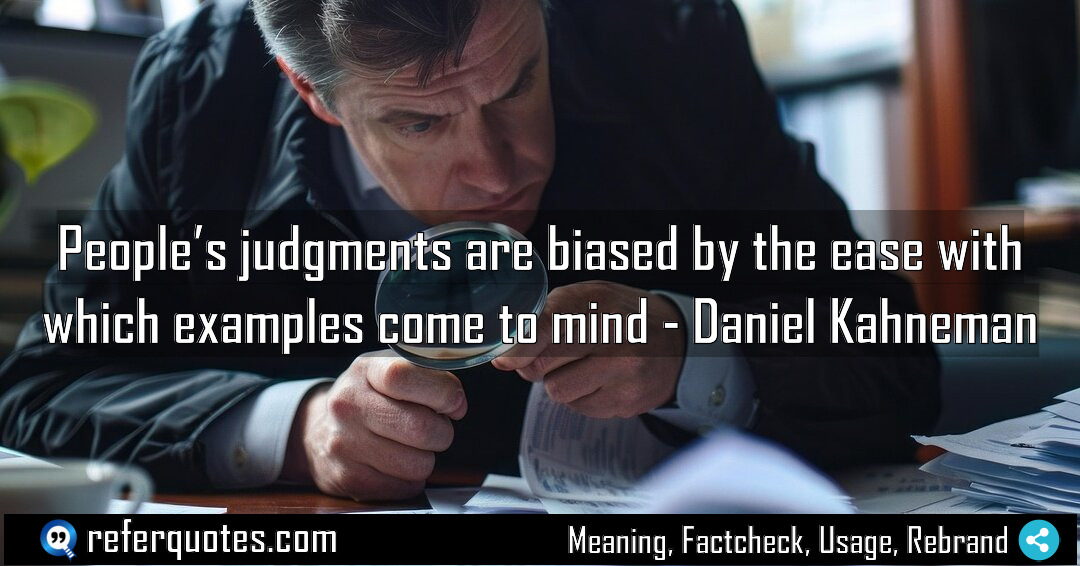People’s judgments are biased by the ease… it’s a game-changing insight from Daniel Kahneman. This simple idea explains so many of our daily mental mistakes, from irrational fears to bad business decisions. Once you understand it, you start seeing it everywhere.
Share Image Quote:Table of Contents
Meaning
At its core, it means we confuse how easy it is to think of something with how true or likely it actually is. It’s a fundamental bug in our mental software.
Explanation
Let me break this down for you. Your brain has two systems—the fast, intuitive one (System 1) and the slow, analytical one (System 2). System 1 is lazy. It loves shortcuts. And one of its favorite shortcuts is this: if you can recall something quickly and vividly, it must be important or common.
But here’s the problem. What’s easy to recall is often just what’s recent, emotional, or vivid—not what’s statistically accurate. So we end up making judgments based on mental availability, not reality. It’s why after seeing a few plane crash stories, you might feel flying is dangerous, even though you know, logically, it’s incredibly safe. Your gut feeling is biased by what’s top-of-mind.
Quote Summary
| Context | Attributes |
|---|---|
| Original Language | English (3668) |
| Category | Education (260) |
| Topics | bias (25), judgment (32), memory (50) |
| Literary Style | academic (9) |
| Emotion / Mood | calm (491) |
| Overall Quote Score | 76 (131) |
Origin & Factcheck
This concept, known as the availability heuristic, was formally introduced by Kahneman and his partner Amos Tversky in 1973. It’s a cornerstone of their Nobel Prize-winning work on judgment and decision-making, later popularized for the masses in his 2011 bestseller, Thinking, Fast and Slow.
Attribution Summary
| Context | Attributes |
|---|---|
| Author | Daniel Kahneman (54) |
| Source Type | Book (4032) |
| Source/Book Name | Thinking, Fast and Slow (54) |
| Origin Timeperiod | 21st Century (1892) |
| Original Language | English (3668) |
| Authenticity | Verified (4032) |
Author Bio
Dr Daniel Kahneman transformed how we think about thinking. Trained in Israel and at UC Berkeley, he built a career spanning Hebrew University, UBC, UC Berkeley, and Princeton. His partnership with Amos Tversky produced prospect theory and the heuristics-and-biases program, culminating in the Nobel Prize in Economic Sciences. He engaged broad audiences through bestselling books and practical frameworks for better decisions. He continued writing and advising late into life, leaving ideas that shape economics, policy, medicine, and management. If you want to dive deeper, start with the Dr Daniel Kahneman book list and explore his enduring insights.
| Official Website
Where is this quotation located?
| Quotation | People’s judgments are biased by the ease with which examples come to mind |
| Book Details | Publication Year: 2011; ISBN: 9780374275631; Latest Edition: Farrar, Straus and Giroux, 2013; Number of pages: 499. |
| Where is it? | Part II: Heuristics and Biases, Chapter 13: Availability, Approximate page 220 (2013 edition) |
